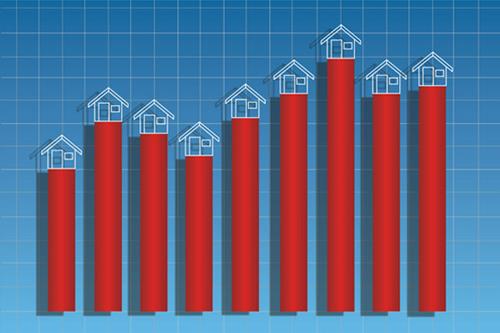Sales of $1 million-plus condos up 86 per cent in the GTA and 11 per cent in Vancouver
9/27/2017
| SHARE
Posted in Real Estate Market by Vanguard Realty | Back to Main Blog Page

Sales of homes priced over $1 million were up year-over-year in Victoria, Calgary, and Oakville while recent government housing policy changes in& British Columbia and Ontario led to cooling of the luxury markets in the Greater Toronto Area (GTA) and Vancouver during the first seven months of 2017. The luxury condo and detached single-family home markets diverged on distinctly different paths in recent months in both the GTA and Vancouver, as condo sales continued to soar despite decreased demand for upper-end detached single-family homes in both urban centres.
Sales of $1 million-plus single-family detached homes declined 32 per cent in Vancouver year-over-year to start 2017. The foreign buyer tax implemented by the provincial government in August 2016 is a contributing factor to this decline, as the tax led to fewer offshore buyers entering this segment of the market. At the same time, a strong mix of demand from downsizing baby boomers, foreign buyers and affluent younger couples led to an 11 per cent year-over-year increase in luxury condo sales in Vancouver.
"The foreign buyer tax introduced last year—combined with a good selection of luxury single-family detached homes—reduced buyers' sense of urgency in this segment of Vancouver's market," said Elton Ash, Regional Executive Vice President, RE/MAX of Western Canada. "Conversely, supply was unable to keep pace with demand in the city's luxury condo market and sales continue to rise year-over-year. As a result we are seeing more developers turn their attention to condo projects and are anticipating more luxury units to enter the market in the coming years."
Similarly in the GTA, luxury condo sales continued to increase significantly, growing 86 per cent year-over-year between January and July in 2017. In large part, this can be attributed to overall price appreciation in the market over the course of the last year, resulting in more condos meeting the higher dollar threshold, combined with condo inventory levels failing to keep pace with demand. The price appreciation across the market was a strong motivating factor for many baby boomers to sell their homes and use the equity to downsize to luxury condo units.
Despite the continued high demand for condos, overall demand for $1 million-plus properties in the GTA slowed during the first seven months of 2017, decreasing by 25 per cent year-over-year. The main factor driving the decrease in activity in the GTA was the introduction of the Ontario government's Fair Housing Plan. The 16-point plan announced in April detailed housing policy changes targeted at slowing the price appreciation that characterized the GTA market in the previous year. The 15 per cent non-resident speculation tax included in the plan slowed demand from overseas buyers in the upper-end of the market, and the policy changes as a whole curtailed activity significantly for single-family detached homes throughout the GTA in the short-term.
"Many buyers across the GTA moved to the sideline and are taking a wait-and-see approach to get a better sense of where the market is headed in the long-term following the introduction of the Fair Housing Plan," said Christopher Alexander, Regional Director, RE/MAX INTEGRA Ontario-Atlantic Canada Region. "The result is decreased demand for single-family detached homes and a slowing of new development projects in this segment of the market. However, condo activity remains strong, as supply has not yet met demand and buyers still see condos as a relatively affordable option in the GTA."
In the upper-end of the GTA's luxury market, demand for single-family detached homes over $3 million did not decline as significantly as demand for properties in the mid to low range of the luxury segment. Prices for$3 million plus homes remained relatively stable and premier, move-in ready homes continue to sell quickly. Sellers of properties requiring some renovations are generally willing to adjust their prices to meet the slowing of demand throughout most of the GTA's luxury market.
The Toronto suburb of Oakville continued to see tremendous growth, with sales for properties between $2.5 and $3 million increasing by 112 per cent year-over-year. Oakville's proximity to Toronto and strong local schools are a main attraction for buyers looking to enter the market.
A strong local economy in Victoria contributed to increased activity in the luxury market in 2017, with sales for$1 million-plus properties up 10 per cent year-over-year. Young families could capitalize on price appreciation in the market and use the equity from the sale of their home to move up into the luxury segment. The temperate climate and high quality of life in Victoria continues to promote strong in-migration from other provinces, while the low Canadian dollar and interest rates in the first half of the year helped attract buyers from the U.S., Europe and Asia to the market.
Relatively stable energy prices over the last few months helped provide a boost to Calgary's luxury market, with sales for properties over $1 million up 21 per cent year-over-year in 2017. Consumer confidence grew over the first seven months of the year with the gradual recovery of the province's oil sector, and there remains a good mix of inventory in the city, including in the upper-end of the market. The most expensive property sold between January and July this year was a condo unit that sold for $6 million, while the typical luxury buyer continues to be families looking for detached homes.
Luxury market trends seen in Canada's major markets during the first seven months of the year are expected to continue through the end of 2017 based on interviews with RE/MAX brokers and associates. For more information, please visit the 2017 RE/MAX Spotlight on Luxury.
|
Number of properties sold year-over-year (January 1 to July 31) |
Highest sold (January 1 to July 31) |
|||||||||||
|
$1 - 2 million |
$2 - 3 million |
$3 million and above |
||||||||||
|
2017 |
2016 |
YOY |
2017 |
2016 |
YOY |
2017 |
2016 |
YOY |
2017 |
2016 |
||
|
Victoria |
||||||||||||
|
Freehold |
502 |
469 |
7% |
59 |
56 |
5% |
20 |
12 |
N/A* |
$6,000,000 |
$6,200,000 |
|
|
Condominium |
37 |
24 |
54% |
1 |
3 |
N/A* |
N/A* |
N/A* |
N/A* |
$2,500,000 |
$2,400,000 |
|
|
Total |
539 |
493 |
9% |
60 |
59 |
2% |
20 |
12 |
N/A* |
$6,000,000 |
$6,200,000 |
|
|
Vancouver |
||||||||||||
|
Freehold |
819 |
1042 |
-21% |
348 |
551 |
-37% |
445 |
762 |
-42% |
$18,500,000 |
$31,100,000 |
|
|
Condominium |
579 |
518 |
12% |
111 |
79 |
41% |
54 |
76 |
-29% |
$8,700,000 |
16,600,000 |
|
|
Total |
1398 |
1560 |
-10% |
459 |
630 |
-27% |
499 |
838 |
-40% |
$18,500,000 |
$31,100,000 |
|
|
Calgary |
||||||||||||
|
Freehold |
359 |
295 |
22% |
26 |
27 |
-4% |
6 |
4 |
N/A* |
$5,600,000 |
$3,700,000 |
|
|
Condominium |
30 |
18 |
N/A* |
1 |
3 |
N/A* |
1 |
2 |
N/A* |
$6,000,000 |
$8,389,500 |
|
|
Total |
389 |
313 |
24% |
27 |
30 |
-10% |
7 |
6 |
N/A* |
$6,000,000 |
$8,389,500 |
|
|
Oakville |
||||||||||||
|
Freehold |
797 |
725 |
10% |
132 |
101 |
31% |
51 |
24 |
113% |
$16,000,000 |
$8,300,000 |
|
|
Condominium |
25 |
10 |
N/A* |
4 |
5 |
N/A* |
N/A* |
N/A* |
N/A* |
$2,100,000 |
$2,900,000 |
|
|
Total |
822 |
735 |
12% |
136 |
106 |
28% |
51 |
24 |
113% |
$16,000,000 |
$8,300,000 |
|
|
Greater Toronto Area |
||||||||||||
|
Freehold |
10403 |
14602 |
-29% |
1770 |
2142 |
-17% |
707 |
846 |
-16% |
$16,000,000 |
$22,000,000 |
|
|
Condominiums |
544 |
287 |
90% |
56 |
38 |
47% |
31 |
14 |
121% |
$11,500,000 |
$6,000,000 |
|
|
Total |
10947 |
14889 |
-26% |
1826 |
2180 |
-16% |
738 |
860 |
-14% |
$16,000,000 |
$22,000,000 |
|
*Sample size not large enough for YOY comparison
Source: Historical values are sourced from CREA or local board statistics
Canada Real Estate, Canadian Housing Market

Thinking of buying or selling a property, or have a question regarding the real estate market? Fill out the form below and we'll get back to you promptly.
